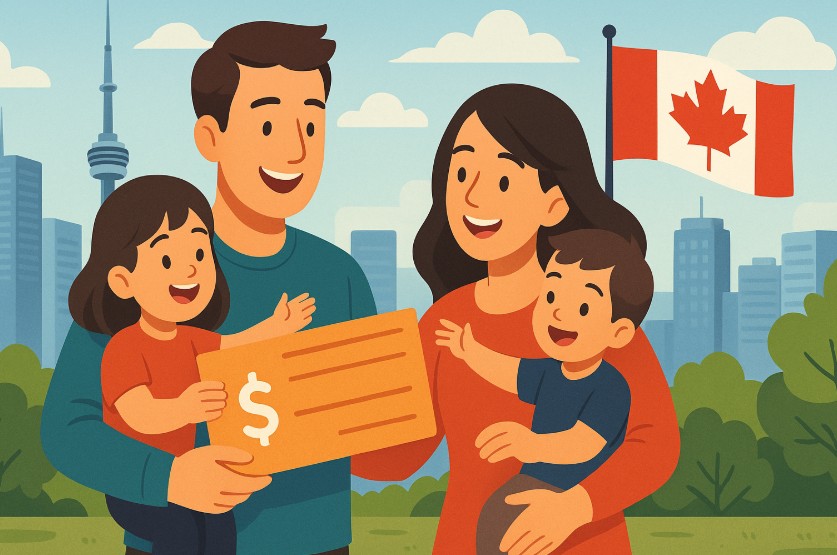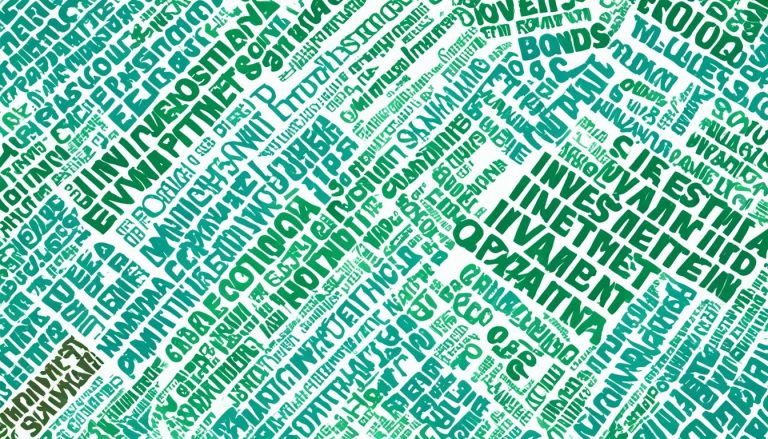Starting a family comes with a range of emotional and financial changes. For many new parents living in Ontario, understanding government support like child benefits can significantly help with the rising costs of raising children.
If you’re navigating through new parenthood and trying to understand how much financial assistance you might be eligible for, you’re not alone. The Ontario Child Benefit (OCB) and the Canada Child Benefit (CCB) are designed to support low- to moderate-income families by offering monthly, tax-free payments.
This guide walks you through everything you need to know about how much you can receive, who qualifies, how payments are made, how to apply, and how benefits may vary across provinces.
Whether you’re already residing in Ontario or planning to move there, this blog aims to simplify the complex benefit system in an easy-to-follow way tailored specifically for new parents.
What Is the Ontario Child Benefit (OCB)?

The Ontario Child Benefit (OCB) is a monthly, non-taxable financial support provided to families in Ontario with children under 18 years of age. It helps cover the basic living expenses of raising a child and is especially targeted at low- to moderate-income households.
This benefit is designed to reduce child poverty and provide consistent monthly financial support, regardless of employment status.
You might be eligible for the OCB if:
- You are a resident of Ontario
- You have a child under the age of 18 in your care
- You are primarily responsible for the child’s upbringing
- You qualify for the federal Canada Child Benefit (CCB)
- You have filed your previous year’s income tax return
Importantly, the OCB does not require a separate application. Once you apply for the Canada Child Benefit (CCB), you are automatically assessed for the OCB by the Canada Revenue Agency (CRA). This benefit is recalculated every July based on your family’s income from the previous year.
The OCB is a vital source of support for many families in Ontario, with over 500,000 families and nearly a million children receiving it every year.
How Much Can You Receive in Ontario Child Benefit Payments?
For new parents in Ontario, understanding how much you can receive under the Ontario Child Benefit is crucial for budgeting and financial planning. The amount varies depending on your income level and the number of children you have in your care.
What is the Maximum OCB Amount Per Child?
The maximum annual amount you can receive for the 2025–2026 benefit year is $1,727 per child, which translates to approximately $143.91 per month. This full amount is typically available to families with an adjusted family net income (AFNI) of $26,364 or less.
How Much is the Monthly OCB Payment?
OCB payments are issued monthly, directly into your bank account. For eligible families, the full monthly amount per child is $143.91. If your income is higher than the threshold, your payment will be adjusted accordingly.
Does Your Income Affect the Amount?
Yes, your income directly influences how much you receive. The OCB is based on your previous year’s adjusted family net income. If your AFNI exceeds $26,364, your benefit starts to decrease. This sliding scale ensures that those with the greatest need receive the most support.
Can You Still Receive Partial Payments?
Absolutely. Families with incomes slightly above the threshold may still receive partial benefits, though the payment will be lower than the maximum.
It’s important to note that as your income increases, the benefit is gradually reduced. However, you won’t be cut off abruptly unless your income reaches a level where eligibility ends.
Understanding these details ensures that you’re financially prepared for the year ahead, knowing what support is available and how it’s calculated.
What Is the Canada Child Benefit (CCB) and How Does It Work With the OCB?

In addition to the OCB, families in Ontario are also eligible for the Canada Child Benefit (CCB), a federal program that offers further financial support for raising children. The CCB and OCB work together, with the OCB being calculated based on your eligibility for the CCB.
How Much is the CCB for Children Under 6 and 6–17?
For the July 2025 to June 2026 benefit year, families with children under 6 years can receive up to $7,997 per child annually, which equals $666.41 per month. For children aged 6 to 17, the amount is $6,748 per year, or $562.33 per month, assuming your adjusted family net income is under $37,487.
How Are CCB and OCB Payments Calculated Together?
The CRA uses your adjusted family net income from the previous tax year to determine both the CCB and OCB amounts. When you apply for the CCB, your information is shared with provincial systems to assess your OCB eligibility. These payments are then bundled and paid out as one combined monthly deposit.
For example, if you’re eligible for both full benefits, you could receive:
- $666.41 (CCB for child under 6)
- $143.91 (OCB for any eligible child)
- Total: $810.32 per month
What’s the Difference Between Federal and Provincial Child Benefits?
The CCB is federal, funded and managed by the Canadian government, while the OCB is provincial, specific to Ontario residents. Although both are non-taxable, they serve slightly different purposes.
The CCB provides broad financial support across Canada, while the OCB targets Ontario families with lower incomes. Together, these benefits offer comprehensive support for raising children in Ontario.
How Are Child Benefit Amounts Calculated in Ontario?
The amount you receive in child benefits, including the OCB and CCB, is calculated using a few core factors:
- Adjusted Family Net Income (AFNI): This is your total family income after deductions, based on the prior year’s tax return. If your income is under $26,364 for OCB or under $37,487 for CCB, you may qualify for maximum benefits.
- Number of Children: Payments increase with each additional eligible child in your care.
- Age of Children: CCB benefits vary based on age, children under 6 receive more than those aged 6 to 17.
- Custody Arrangement: If you share custody, you receive 50 percent of the payment amount calculated based on your own income.
Each July, your payments are recalculated using updated tax data. If your income changes significantly from one year to the next, your benefits may increase or decrease. Understanding how these factors work helps you anticipate how much support you may receive.
How Do You Apply for the Ontario Child Benefit as a New Parent?
Applying for the OCB is not a separate process. If you’re a new parent, your application for the Canada Child Benefit (CCB) automatically includes assessment for the OCB.
Here’s how to apply as a new parent:
- Register your child’s birth through Ontario’s Newborn Registration Service. This allows your information to be securely shared with the CRA.
- Alternatively, you can apply online via the CRA’s My Account for Individuals.
- You can also apply by mail using Form RC66 if you didn’t register your child online or at the hospital.
- Make sure you submit proof of birth, a valid SIN, and complete all the required steps in the CRA portal.
- You don’t need to reapply each year. However, it’s essential to file your income tax return annually, even if you earned no income. This keeps your eligibility active and ensures continued payments.
By applying early, you can expect to receive your first payment within 8 to 11 weeks.
When and How Are OCB Payments Made?
Understanding the payment schedule helps you plan better for your monthly expenses. The Ontario Child Benefit is paid out monthly, along with the Canada Child Benefit, as one combined deposit.
- Payment Date: Usually around the 20th of every month
- Direct Deposit: Payments go directly into your registered bank account
- First Payment Timeline: Within 8 weeks of applying online or 11 weeks by mail
- Annual Recalculation: Payments are recalculated every July based on your prior year’s tax return
If your income or household circumstances change, the CRA adjusts your payment accordingly in the next cycle. However, missing your tax return filing can pause or stop your payments altogether. So it’s essential to file taxes on time every year.
How Does Shared Custody Affect Child Benefit Payments?

In shared custody situations, child benefit payments are not split arbitrarily. Instead, each parent is evaluated based on their own income and receives 50 percent of what they would have been eligible for if they had sole custody.
- Equal Custody (40 to 60 percent): Both parents receive half of the full benefit amount
- Unequal Custody: The parent with less than 40 percent custody is not considered eligible
Each parent must still meet all eligibility criteria individually. Also, the CRA doesn’t divide payments based on other percentages or give one parent the full amount in shared custody cases. This ensures fairness and reflects the time each parent spends caring for the child.
How Does the Ontario Child Benefit Compare to Other Provinces?
Each Canadian province offers its own child benefit program, often supplementing the federal CCB. However, the amounts and income thresholds vary.
What Do Other Provinces Offer?
Some examples include:
- British Columbia: Up to $145.83 monthly for the first child
- Alberta: Up to $1,499 annually for the first child
- Nova Scotia: $127.08 monthly per child
- Newfoundland and Labrador: Up to $190.41 monthly per child
Is Ontario’s Child Benefit Higher Than Others?
Ontario’s OCB of $143.91 per month per child is among the more generous provincial programs, especially when combined with the CCB. However, some provinces like Newfoundland or BC (for single parents) may provide slightly more under specific conditions.
Provincial Child Benefit Comparison
| Province | Income Threshold | Max Monthly Benefit per Child |
| Ontario | $26,364 | $143.91 |
| British Columbia | $29,526 | $145.83 (first child) |
| Alberta | $27,565 | $124.91 (first child) |
| Nova Scotia | $26,000 | $127.08 |
| Newfoundland & Labrador | $17,397 | $190.41 (per child) |
| New Brunswick | $20,000 | $20.83 |
| PEI | $45,000–80,000 | $20–30 |
While OCB is competitive, each province prioritises support differently depending on cost of living and population needs.
How Can You Maximise Your Ontario Child Benefit?

If you’re aiming to increase your OCB payments or keep more money in your pocket, consider these strategies:
- Reduce taxable income: The lower your AFNI, the higher your benefit eligibility.
- Claim tax deductions: Expenses like childcare costs, tuition, and medical bills can be deducted.
- Leverage tax credits: Consider credits for charitable donations, adoption, or disability-related expenses.
- File taxes on time: Missing tax deadlines can delay or cancel benefit payments.
Consulting with a tax professional can also help you uncover opportunities you may have missed. These efforts ensure you’re getting the most support available.
Can You Get Other Benefits Alongside the OCB?
Yes, families in Ontario may qualify for additional benefits beyond the OCB and CCB.
- Canada Child Disability Benefit (CDB): Up to $3,411 annually for children with long-term physical or mental disabilities
- Shared custody benefits: 50 percent of benefits for each parent if shared custody exists
- $10-a-day childcare programme: Ontario participates in this federal initiative to reduce daycare costs
- Retroactive Universal Child Care Benefit (UCCB): Still claimable as taxable income for past years
It’s also worth noting that OCB is considered income when applying for personal loans. Some families use this to access credit more easily. However, always consider the terms before applying for loans based on benefit income.
Conclusion
For new parents in Ontario, the child benefit system offers vital financial support to help with the costs of raising a child. The Ontario Child Benefit (OCB) and the Canada Child Benefit (CCB) work together to provide consistent, monthly, non-taxable payments based on your family income and number of children. With clear eligibility rules and easy application methods, these benefits are designed to reduce stress and improve family well-being.
By understanding how these systems work and staying on top of your annual tax filings, you can ensure that your family receives every bit of financial support you’re entitled to. Always explore all available benefits to help maximize your household income and better plan your family’s financial future.
FAQs
When do OCB payments start after applying?
Your payments typically start within 8 weeks of applying online or 11 weeks by mail.
Can both parents receive OCB if they share custody?
Yes, each parent receives 50 percent of the eligible benefit based on their own income if custody is shared equally.
Do I need to reapply for OCB every year?
No, but you must file your tax return annually to remain eligible.
What happens if my income increases?
Your benefit may be reduced during the next recalculation in July, depending on how much your income rises.
Is the OCB payment taxable?
No, the Ontario Child Benefit is a tax-free monthly payment.
What if I miss filing taxes one year?
Your OCB and CCB payments may stop until your tax return is submitted and processed.
Can non-citizens apply for CCB and OCB?
Yes, as long as you meet residency requirements and have lived in Canada for at least 18 months with valid status.




